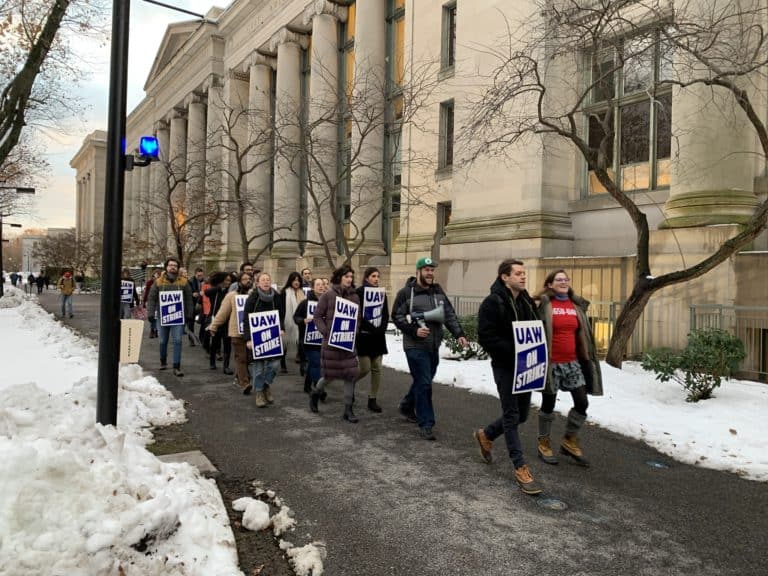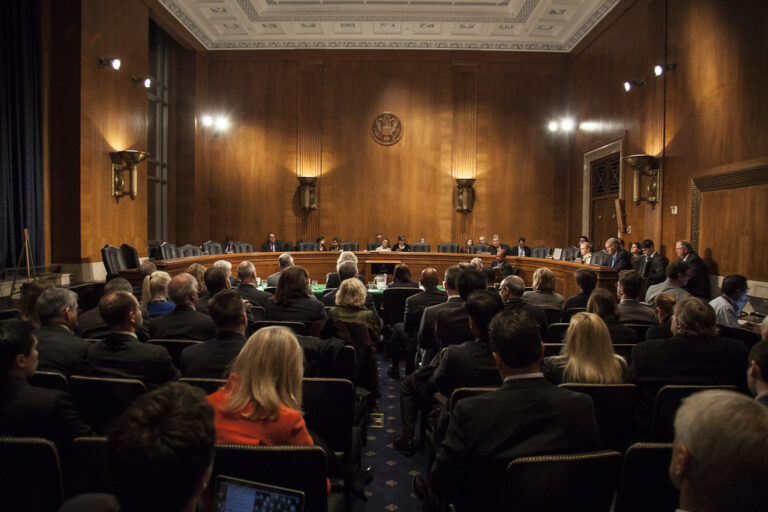Phoebe Bodurtha is a student at Harvard Law School and a member of the Labor and Employment Lab.
It’s no surprise that gig-economy companies are careful to avoid disclosing just how little their independent contractors make on the job. So when one Instacart worker tweeted a receipt of his earnings that showed Instacart paying him a measly $.80 cents for a 69-minute delivery because a customer had tipped him $10, a social media campaign ensued.
Buckling under public pressure, Instacart recently reversed its controversial pay structure under which it used tips to subsidize base wages. Instacart publicly apologized for its “misguided” judgment and assured its workers that from now on tips will be separate from base wages.
Many have celebrated this outcome as a victory for gig-economy workers. Yet while coverage has been overwhelmingly positive, little attention has been paid to whether Instacart’s workers will actually see higher wages going forward.
Background
Instacart is an app-based company with an army of roughly 70,000 independent contractors, known as “shoppers,” who deliver groceries and other household items to customers. As independent contractors, Instacart shoppers are not afforded a transparent pay structure or guaranteed a steady income. All shoppers know is what they see on their smart phones when pinged by Instacart to complete a delivery. Before November of last year, shoppers saw the following wage information: a base pay for each order (which varied widely by region), a per-item fee (typically $.40), sometimes an extra bump for an especially large order or a long-distance delivery, and then an optional tip.
In November, Instacart introduced a new pay structure: a batch incentive (the base pay, just rebranded), mileage (Instacart would begin paying drivers $.60 for every mile driven), and then the customer tip. Along with this change, Instacart guaranteed shoppers $10 at minimum per delivery.
Soon after, shoppers discovered precisely what Instacart meant when it promised them a $10 minimum per delivery: $10 including tips. Through trial and error, they realized that the more customers tipped shoppers, the less Instacart would offer them as the batch incentive.
Outraged, shoppers flocked to social media, posting screenshots and reports of their earnings on sites like twitter, Facebook, and Reddit. Shoppers also organized a petition, urging customers to tip with cash instead to avoid Instacart offsetting their $10 minimum payment. Shoppers also decided to take Instacart to court, filing a class-action lawsuit two weeks ago in California’s Superior Court.
Instacart’s Policy Change
Moving forward, Instacart will separate tips from base pay. It will also offer those who pick, package, and deliver the order a minimum base pay between $7 and $10 dollars, and $5 for just delivery. Instacart will also award backpay for those who lost tips as a result of this policy.
No doubt, Instacart’s policy change is worth celebrating in several respects. Shoppers waged a successful media campaign against a gig-economy giant. Because of their efforts, Instacart reversed a controversial policy and even promised to award backpay to all workers who were negatively affected by it. Also, looking forward, those who earn high tips will now get to reap those rewards.
However, Instacart’s letter also makes clear that it has lowered the guaranteed minimum pay: $5 for deliveries and between $7 and $10 for full-service deliveries. Under this new policy, while some shoppers will earn more than $10 per delivery depending on the tip, others will almost certainly earn less than $10, if they accept a less-than-$10 gig and then receive little to no tip.
Some workers reported 30-40% higher wages before Instacart’s change back in November, and so they hope to return to earning higher wages. Unfortunately, it’s hard to say whether shoppers will earn more under this new pay structure, given the lack of clarity in Instacart’s letter, as well as the company’s secrecy regarding its pay algorithm. Shopper wages have varied greatly in the past depending on a host of factors, such as the region, customer demand, the number of items ordered, a single versus a bundle order, and trip length. Instacart also routinely tweaks its pay algorithm, which can cause wage fluctuation. Instacart’s historical lack of transparency about its pay algorithm, and the uncertainty it creates among shoppers as to how much they can expect to take home in a given day, adds yet another layer of deception to the company’s business practices.
Even with Instacart’s very public apology, shoppers may have reason to worry. When Instacart decided to change its pay structure back in November, the company also slashed membership and delivery fees, in order to stay competitive with other delivery apps. Delivery fees for customers have fallen from $5.99 to $3.99 in most cities, and membership is now $99 instead of $149 per year. Now that Instacart has eliminated a significant revenue stream, it will have to come up with an alternative source of revenue to support workers’ wages. If Instacart fails to sufficiently broaden its customer base, wages could decrease even further in the future.
What About DoorDash and Amazon Flex?
Recently, other companies like DoorDash and Amazon, which also use tips to subsidize base wages, have also come under scrutiny. Despite Instacart’s fate, DoorDash and Amazon Flex have doubled down, insisting that their pay structures ensure minimum payments, higher driver retention, and greater satisfaction overall.
Their answer is unlikely to placate customers. When customers learned about Instacart’s tipping policy, they took to social media to voice their outrage. One customer wrote: “I assumed that tips were just that — not wage replacement.” Another tweeted: “How is this legal?” These tweets confirm that these pay structures run the risk of not only misleading workers but also customers.
Still, perhaps companies like DoorDash and Amazon Flex will fare better than Instacart, depending on what other terms and conditions they offer workers. Interestingly, Amazon Flex pays drivers $18-25 per hour with tips. At first glance, Amazon seems like a better deal than Instacart: a guaranteed hourly wage and a slightly higher base pay. But some Amazon drivers insist that they earn less than minimum wage after on-the-job expenses. Meanwhile, we don’t even actually know what Instacart shoppers make, because Instacart doesn’t make that information available.
The lack of clarity in the wages that workers can expect to earn in these gigs is perhaps the most deceptive practice these companies engage in. For this reason, Instacart’s promise to do better by its workers is hardly reassuring. Instacart has never been transparent about how much shoppers can expect to earn on the job, and its letter hardly provides any meaningful clarification. Its tipping policy is just one facet of much larger problem.
For now, Instacart seems to have secured a PR win by reversing its tipping policy. Hopefully, Instacart knows better than to externalize the costs of this change onto the very same workers who petitioned for higher wages in the first place.






Daily News & Commentary
Start your day with our roundup of the latest labor developments. See all
November 25
In today’s news and commentary, OSHA fines Taylor Foods, Santa Fe raises their living wage, and a date is set for a Senate committee to consider Trump’s NLRB nominee. OSHA has issued an approximately $1.1 million dollar fine to Taylor Farms New Jersey, a subsidiary of Taylor Fresh Foods, after identifying repeated and serious safety […]
November 24
Labor leaders criticize tariffs; White House cancels jobs report; and student organizers launch chaperone program for noncitizens.
November 23
Workers at the Southeastern Pennsylvania Transportation Authority vote to authorize a strike; Washington State legislators consider a bill empowering public employees to bargain over workplace AI implementation; and University of California workers engage in a two-day strike.
November 21
The “Big Three” record labels make a deal with an AI music streaming startup; 30 stores join the now week-old Starbucks Workers United strike; and the Mine Safety and Health Administration draws scrutiny over a recent worker death.
November 20
Law professors file brief in Slaughter; New York appeals court hears arguments about blog post firing; Senate committee delays consideration of NLRB nominee.
November 19
A federal judge blocks the Trump administration’s efforts to cancel the collective bargaining rights of workers at the U.S. Agency for Global Media; Representative Jared Golden secures 218 signatures for a bill that would repeal a Trump administration executive order stripping federal workers of their collective bargaining rights; and Dallas residents sue the City of Dallas in hopes of declaring hundreds of ordinances that ban bias against LGBTQ+ individuals void.